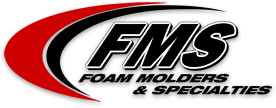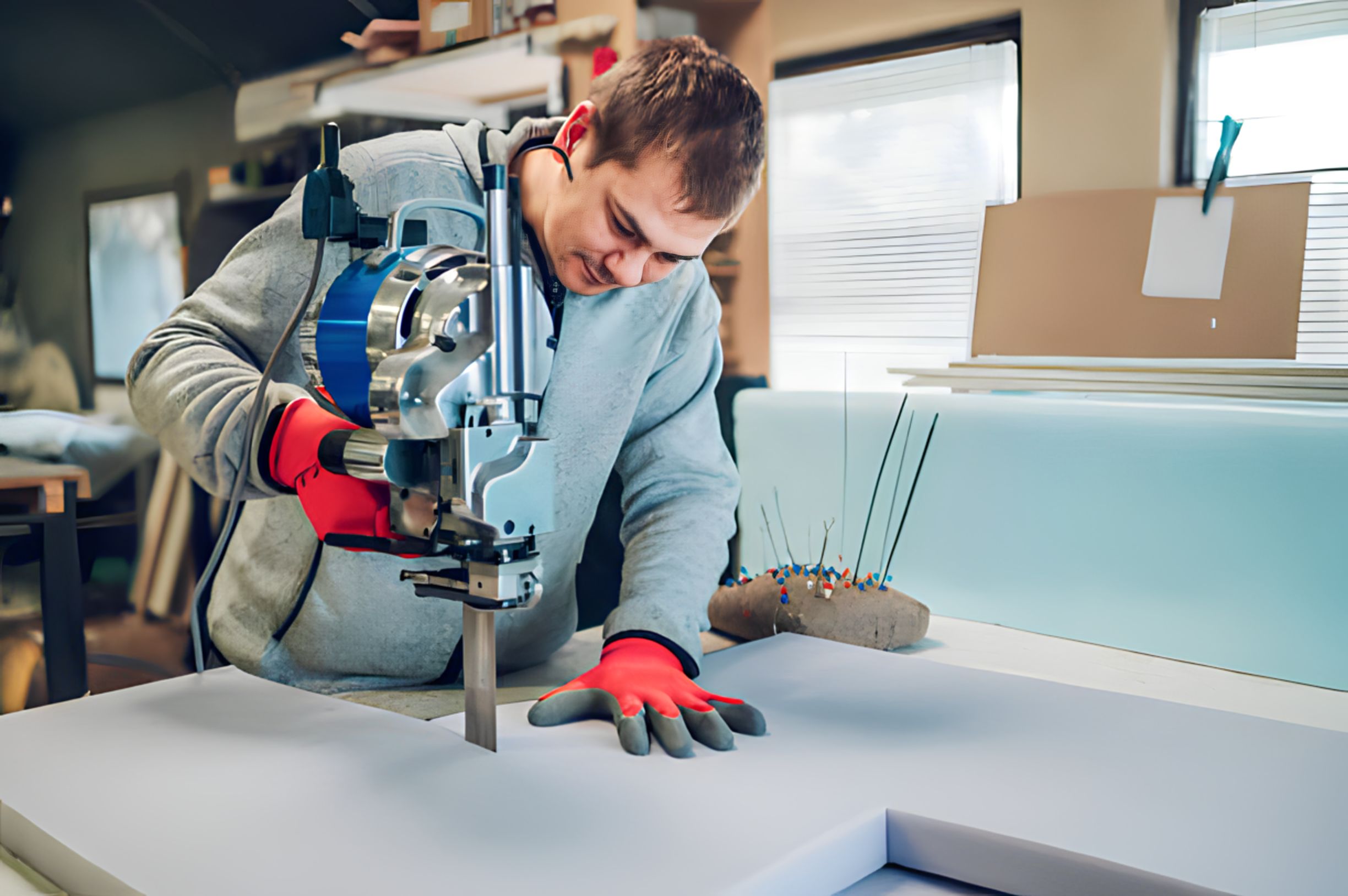From airplanes to cars – from hospitals to camping grounds and military equipment, foam is just about everywhere. The processes involved in fabricating foam products are just as diverse. At Foam Molders, we provide clients across many industries with high-quality foam components and products, leveraging a variety of fabrication processes.
In this article, we will explore some of the most common foam fabrication processes that Foam Molders use, as well as their advantages and drawbacks.
Die Cutting
Die cutting is a foam fabrication process that involves cutting material into precise shapes and sizes using a die or a steel rule. The die is usually made from steel and customized to the specific shape and size required for the foam part. The die is placed on a cutting press, which is used to cut the foam material into the desired shape. Die-cutting is widely used – it’s a cost-effective process that produces consistent quality and accuracy while reducing waste.
For industries like aerospace and automotive, Foam Molders uses die cutting to produce passenger components like seat cushions, headrests, and armrests. These are critical for ensuring passenger comfort and safety during travel.
The machinery used for die cutting can range from hand-operated to fully automated presses. At Foam molders, our fully automated presses use computer-controlled technology to produce precise and consistent cuts, every single time.
What are the advantages of die cutting?
- High accuracy
- Consistency
- Cost-effectiveness
Die cutting produces parts with precise shapes and sizes. This ensures that they fit the intended application perfectly. Automated die cutting equipment can produce multiple units of a component at the same time, reducing cost and speeding up the production process. Die cutting also reduces the need for certain types of finishing processes, which again leads to cost and efficiency gains.
The main drawback to die cutting is that it’s fairly limited in terms of the complexity of the shapes that can be produced. Die cutting is suitable for producing simple to moderately geometric shapes. For more intricate designs, other foam fabrication processes, such as hot wire cutting or thermal forming, may be more suitable.
Hot Wire Cutting
Hot wire cutting is another common foam fabrication process. It involves using a heated wire to cut foam material into the desired shape. The wire is heated using an electrical current, and as it passes through the foam material, it melts and cuts through. Hot wire foam cutting is suitable for producing foam products with intricate and complex shapes.
In the automotive industry, hot wire cutting is often used to produce ceiling headliners, carpet capping, and steering wheel components, among others.
At Foam Molders, we use fully automated CNC hot wire cutting machines for optimal precision, speed, and greater flexibility in terms of the custom components we can produce for you.
What are the key benefits of hot wire foam cutting?
- High precision and accuracy, even for complex shapes
- Consistent quality
- Greater flexibility and customization
Compared to die cutting, hot wire cutting can deliver great results, even when more intricate parts need to be fabricated.
The main drawback of hot wire is the limitation on foam thickness and density. Hot wire cutting is best suited for producing thinner and lower density foam materials. For thicker and higher density foam materials, Foam Molders utilizes other processes, such as convoluting or compression forming.
Splitting/Slitting
Slitting/splitting are two related foam fabrication processes that involve shearing thick foam material into thinner strips or sheets and splitting rolled sheets of materials into narrower roles, respectively. These processes are excellent for foam products with specific thickness requirements. Slitting/splitting can be used to create materials for a range of applications, including acoustic insulation, cushioning, and packaging.
In the medical industry, slitting/splitting is commonly used to produce foam components for equipment such as wound dressings, prosthetic devices, and orthopedic supports. The foam materials used in prosthetic devices, for instance, need to be precisely cut to fit the patient’s unique body shape and size. Splitting/slitting is the best way to achieve the fabrication accuracy needed here.
Convoluting
Convoluting is a foam fabrication process that involves cutting foam material into a wave-like shape. This process is suitable for producing foam products that need enhanced cushioning and support. We use convoluting to create foam materials for a range of applications, including bedding, seating, and packaging.
When it comes to recreational foams, convoluting is often used to produce components for outdoor and indoor equipment, including camping mats, yoga blocks, and exercise equipment. Convoluted foam camping mats, for instance, provide comfort and support for campers and hikers outdoors.
As mentioned, convoluting is best used to provide better cushioning. The convoluted foam shape can distribute weight evenly. This reduces pressure points and improves comfort for the user. Convoluting can also reduce the overall weight of foam products, making them more portable and easier to transport.
A key drawback of convoluting is that it’s not as effective with high density foams or materials that are thicker than two inches. For thicker, higher density materials, we utilize other techniques like thermal forming. compression forming or thermal forming may be more suitable.
Compression Forming
Compression forming is a foam fabrication process that involves compressing foam material into the desired shape using heat and pressure. This process is well suited to use cases that involve thick and very high-density foams, in industries like aerospace, where high-density foam components are required for safety and performance reasons.
In aerospace, compression forming is commonly used to produce components for air ducts, soundproofing and thermal insulation, and cargo protection, among other use cases.
A key benefit of compression forming is the ability to produce foam components with higher density materials than other techniques. Compression forming can compress foam to a much greater degree than fabrication processes. This results in foam components that are denser and more significantly more durable.
Another advantage of compression forming is the ability to produce components with relatively complex designs at larger sizes. This is critical for use cases like aircraft cabin interiors, where large foam components are needed that can stand up to strict performance requirements.
Conclusion
At Foam Molders, we leverage a range of fabrication processes and 50+ years of expertise to provide our customers with the best quality foam components. Our team of experts has worked with businesses across industries, from automotive and aerospace, to defense
and healthcare, to create foam products tailor-made for specific applications.
Foam Molders’ wide-ranging fabrication capabilities enable us to custom-fabricate foam products with the precise shape, size, and density to meet your specific needs. Reach out today – let’s talk about how Folders Molders can help meet your foam fabrication needs. We’re waiting for your foam call!

